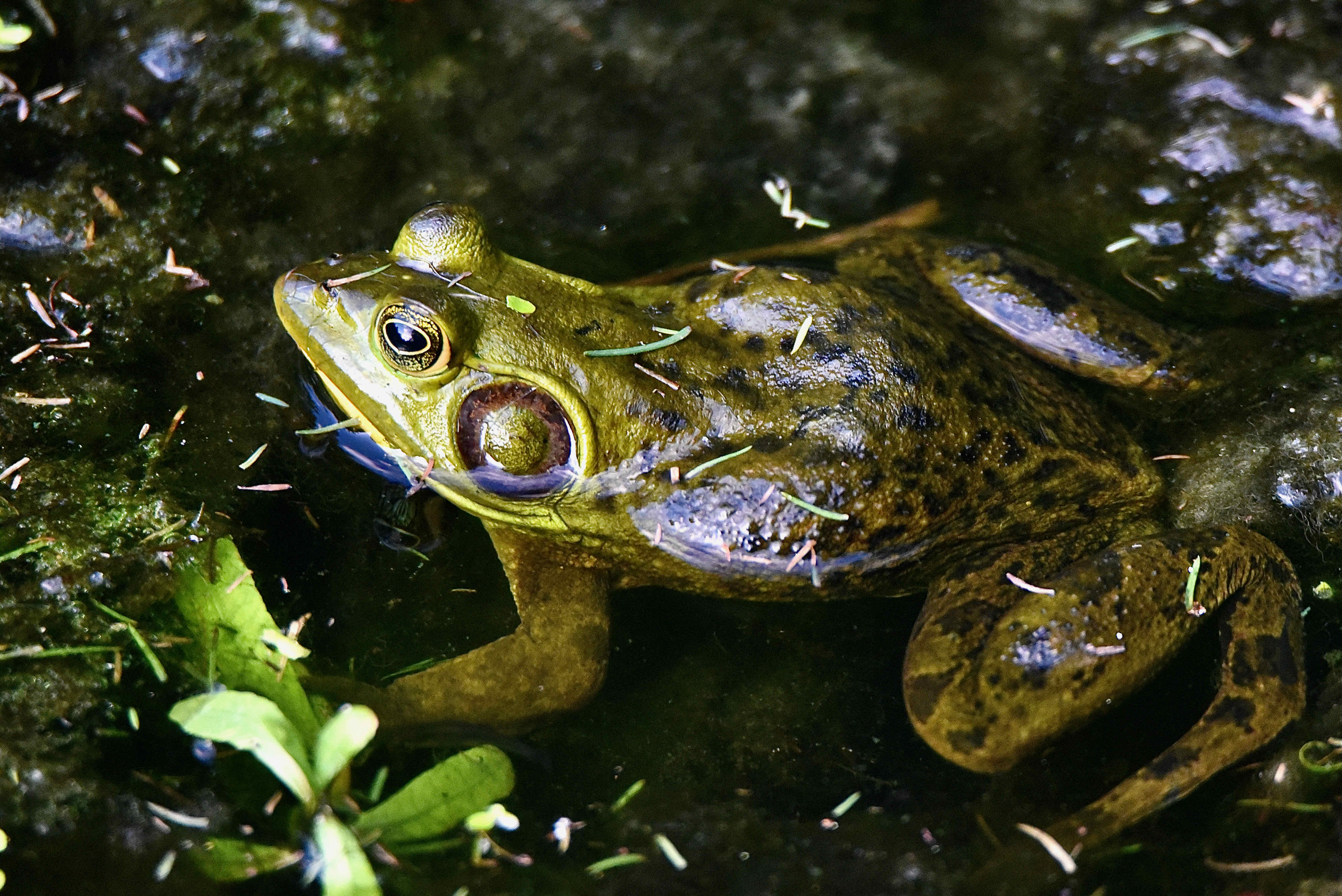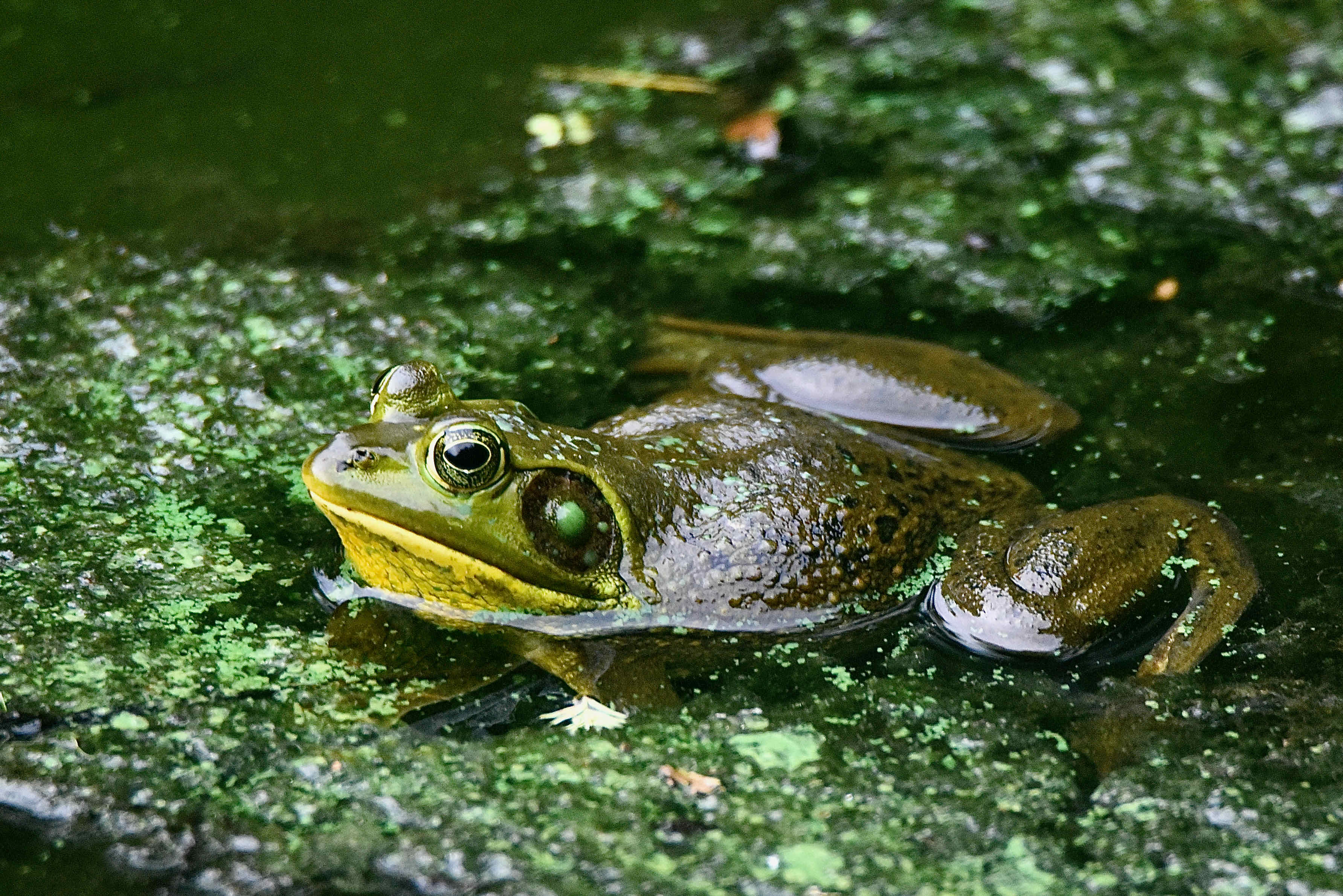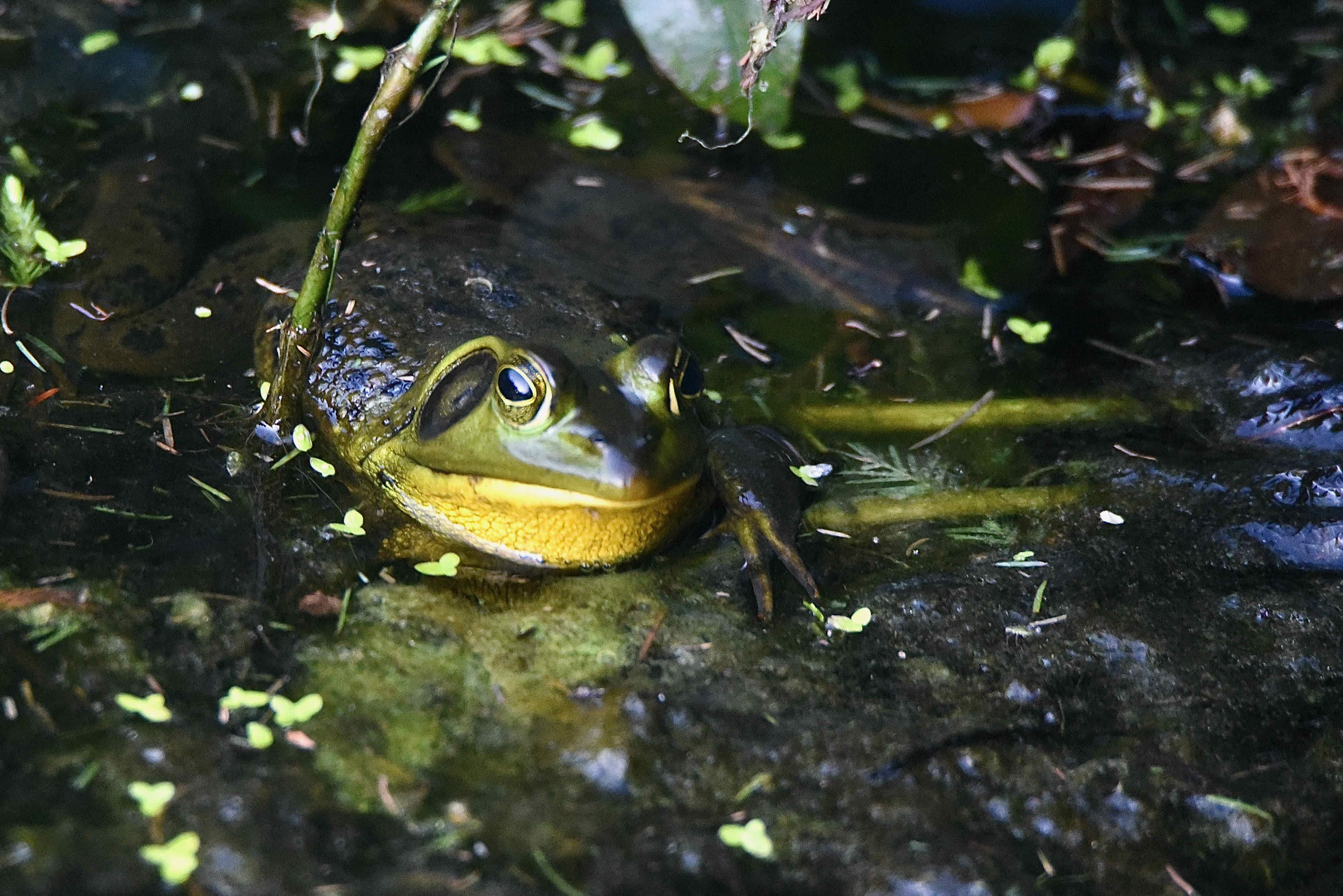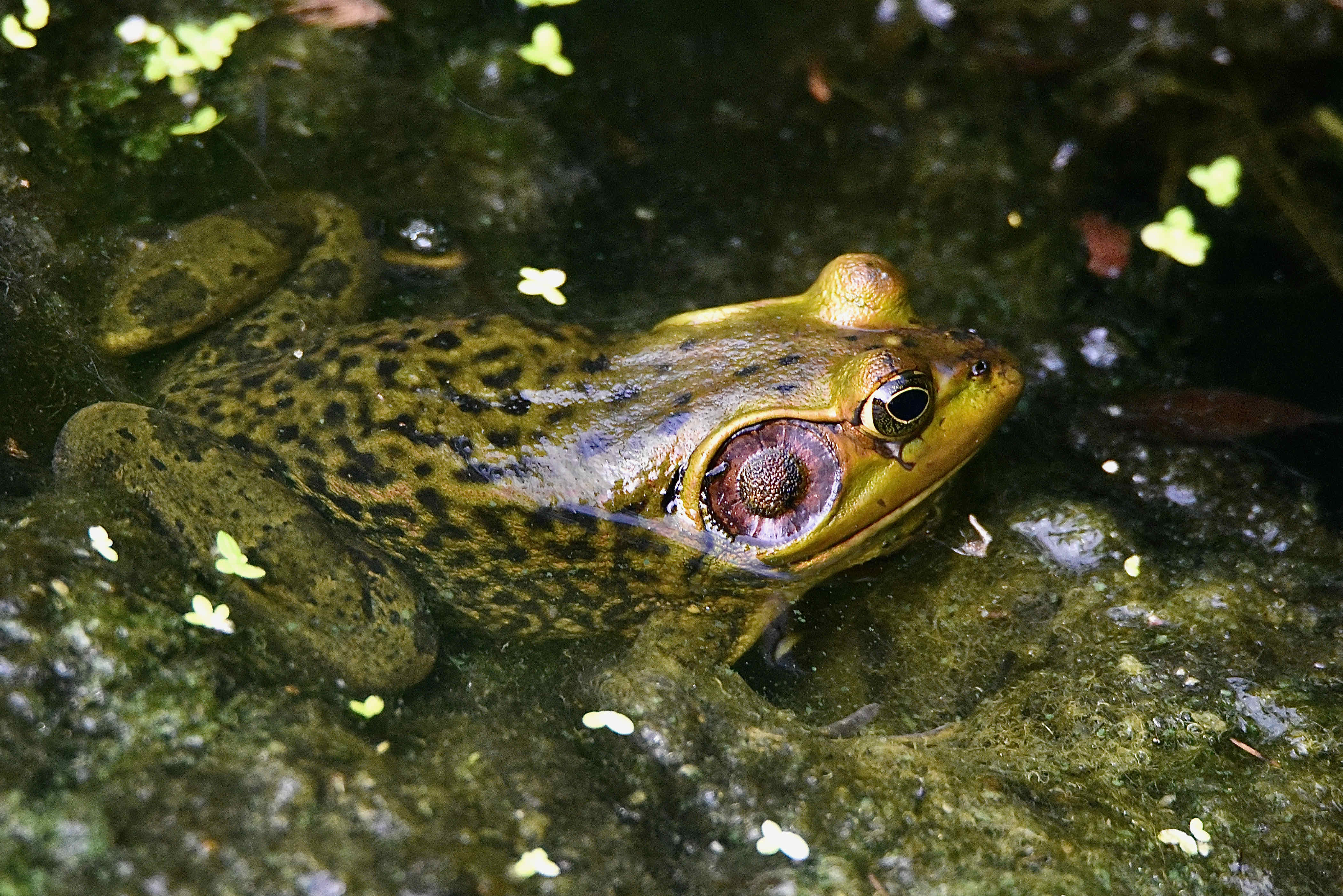
Pig frog, photographed at Green Cay Nature Center, Boynton Beach, Palm Beach County, in April 2021.
The pig frog, Lithobates grylio, is one of those animals you're more likely to hear than to see. In fact, you might hear hundreds, perhaps thousands before you spot one.
Chances are you'll be hearing a chorus rather than the sounds of one or two frogs. Listen closely, then look if you hear one near by. Wait for the guy to grunt again. And again. With a little patience and a little luck, you might see him lurking in the weeds. And it will be most likely a guy pig frog that you spy. Pig frogs gets their name from the pig-like grunts males make to attract females during the spring-summer breeding season.
Pig frogs vary in color from lighter shades of green — yellowish to brownish to nearly black — with a yellowish underside and irregular black or brown blotches on the body and legs. All have toes webbed to the tip, a sharp nose and a prominent membrane behind their eyes for hearing. They are native to Florida, found everywhere except the Keys. Preferred habitat: any quiet, permanent pool of water, from sloughs, ponds and wet prairies to swamps, ditches and canals.
The pig frog's native range extends along the coastal plain from South Carolina to Galveston Bay in Texas. It's an introduced species in the Bahamas and Puerto Rico, where's its presence is a bit of a controversy, because some see it as a vector for disease infecting native frogs. It is common in Florida, found in heavy vegetation along the edges of bodies of water. It is the most hunted frog in Florida. In turn, the pig frog is a hunter itself. Favorite foods include crayfish, but it will eat anything it can swallow, including dragonflies, beetles, aquatic bugs — and other frogs. Females lay their eggs — as many as 10,000 of them — in a film on water from April through August.
Frog legs, unfortunately for frogs, are a human delicacy pretty much anywhere around the globe. Europe, Asia, North America, frogs are on the menu. The Fellsmere Frog Leg Festival just up the road a bit in Indian River County, accounts for 7,000 pounds of frog legs annually. Hunting has caused the near extinction of a number of species and other environmental problems. Bangladesh banned frog exports in 1993 because of an increase in malaria cases and the overuse of expensive pesticides needed to do the job that frogs did for free. Even France — France! — has banned the serving of native frogs.
Some countries, particularly in Asia, have turned to farming as a means of meeting the demand for frog legs. Reportedly, pig frogs have been imported into China to be farm raised. But farming has had some environmental problems of its own — the imports carry disease that affects native populations. They also escape into the wild and eat the locals. The International Union for Conservation of Nature places the pig frog on its "least concern" list, meaning it's in no danger of extinction. But also says the pig frog population is declining, and cites habitat loss as a major threat.
Pig frogs are amphibians, members of Ranidae, the family of true frogs. Other common names include southern bullfrog, lagoon frog and southern bull frog. Note: the pig frog is also called Rana grylio in the scientific community. Lithobates grylio is the scientific name given the frog by Leonhard Stejneger, who first described the species in 1901.
Pig frogs are members of Ranidae, the family of true frogs.



